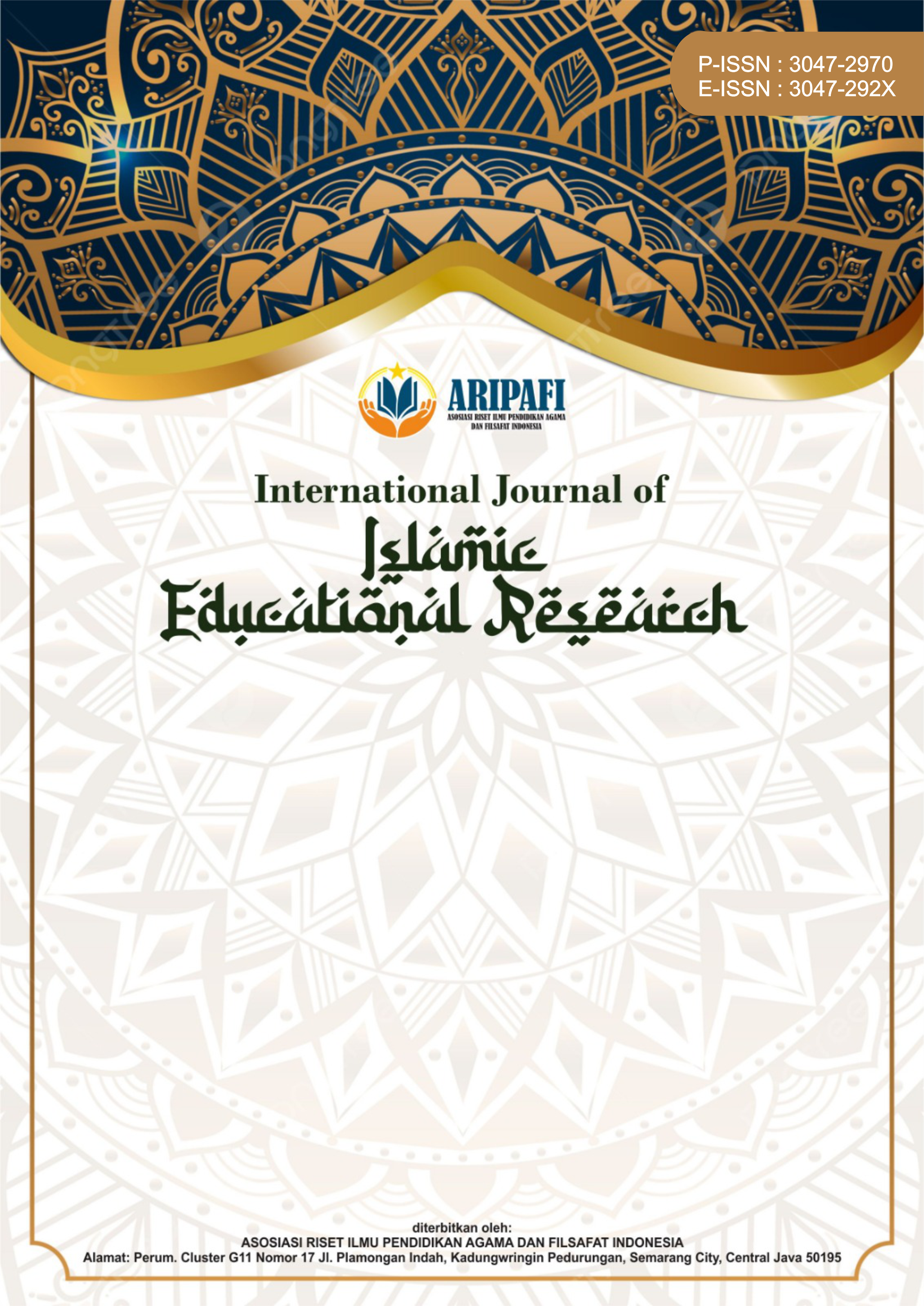Construction and Exixtence of Islamic Educational Management Science
DOI:
https://doi.org/10.61132/ijier.v2i3.372Keywords:
Construction, Existence, Management of Islamic EducationAbstract
The purpose of this study is to determine the construction and existence of Islamic educational management science. The research conducted is descriptive in nature where researchers collect words not in the form of a series of numbers for this study which in essence these words can provide a description or present existing problems and problem solving. The data analysis used is by analyzing the content, where the analysis emphasizes more on describing the contents of various existing propositions that are born from various theories and previous analyses conducted by other researchers. The results of the study indicate that the construction of science or the order of science is certainly related to several understandings about how someone seeks knowledge. The construction of the Islamic education system refers to the process of planning, organizing, and implementing various components and strategies of education based on the principles and values of Islamic teachings. The existence of Islamic Education Management shows that Islamic Education Management really exists and its existence is recognized in real terms by society. Existence Islamic educational management science focuses on governance actions that are considered not yet fully implemented by Islamic educational institutions, for example the concept of transparency and integrity. Theoretically, the discussion can be shifted to Islamic education science or to Islamic studies rather than directly to holy verses that can be dogmatic
References
Fred N. Kerlinger and Howard B. Lee, Foundations of Behavioral Research , 4th ed Fort Worth, TX: Harcourt College Publishers, 2000.
Fitri, Agus Zaenul, and Nik Haryanti. 2020. Educational Research Methodology: Quantitative, Qualitative, Mixed Method and Research and Development . Malang: Madani Media.
Husin, Achmad Fadlan, Badarusyamsi and Jamrizal , Islamic Education System Model: Definition, Types, Construction in Islamic Education , Informatics Media Journal [JUMIN] 6 no. 1, 2024, 236-239
Irawan Irawan, “Paradigm of Islamic Educational Management Science,” MANAGERIA: Journal of Islamic Educational Management 1, no. 2 (2016): 297–315
JS Suriasumantri, Philosophy Knowledge: A Introduction Popular (Library Ray of Hope, 1995).
Juliansyah Noor, Management Science Research Philosophical and Practical Review London: 2015.
KBBI Online, 20 25 . accessed via: https://kbbi.kemdikbud.go.id/entri/eksisten
Komariah Komariah, “Structure of Knowledge,” Genealogy of Islamic Religious Education: Scientific Journal of Islamic Religious Education 3, no. 02 (February 7, 2017): 69–84.
Liang Gie The, Introduction Philosophy Knowledge , 2nd ed. Yogyakarta :, 2000
Marno, Management and Leadership of Islamic Education, 1st ed. Bandung: Refika Aditama, 2008
Mohammad Muslih, Philosophy of Science: A Study of Basic Assumptions, Paradigms and Frameworks of Scientific Theory (Yogyakarta: Belukar Publisher, 2012), 75
Muhamad Fatih Rusydi Syadzili, Leadership Model and Development of Potential Leaders of Islamic Education, Cendekia: Journal of Islamic Studies, (Vol.4, No.2 December 2018), 127-136.
Mujamil Qomar, Islamic Education Management: New Strategies for Managing Islamic Educational Institutions Jakarta: Erlangga, 2007.
Siti Raudhatul Jannah, "Characteristics and Spectrum of Islamic Education Management," Al- Fikrah: Journal of Islamic Education 4 (2013).
Suharsimi Arikunto and Lia Yuliana, Educational Management , Yogyakarta : Aditya Media Pub, 2009
Syadzili, Muhamad Fatih Rusydi, “Existence and Paradigm of Islamic Educational Management Science,” Tasyri', Vol 26, Number 1, 2019
Thomas S. Kuhn and Ian Hacking, The Structure Of Scientific Revolutions, Fourth edition ( Chicago; London: The University of Chicago Press, 2012), 10.
Downloads
Published
How to Cite
Issue
Section
License
Copyright (c) 2025 International Journal of Islamic Educational Research

This work is licensed under a Creative Commons Attribution-ShareAlike 4.0 International License.





